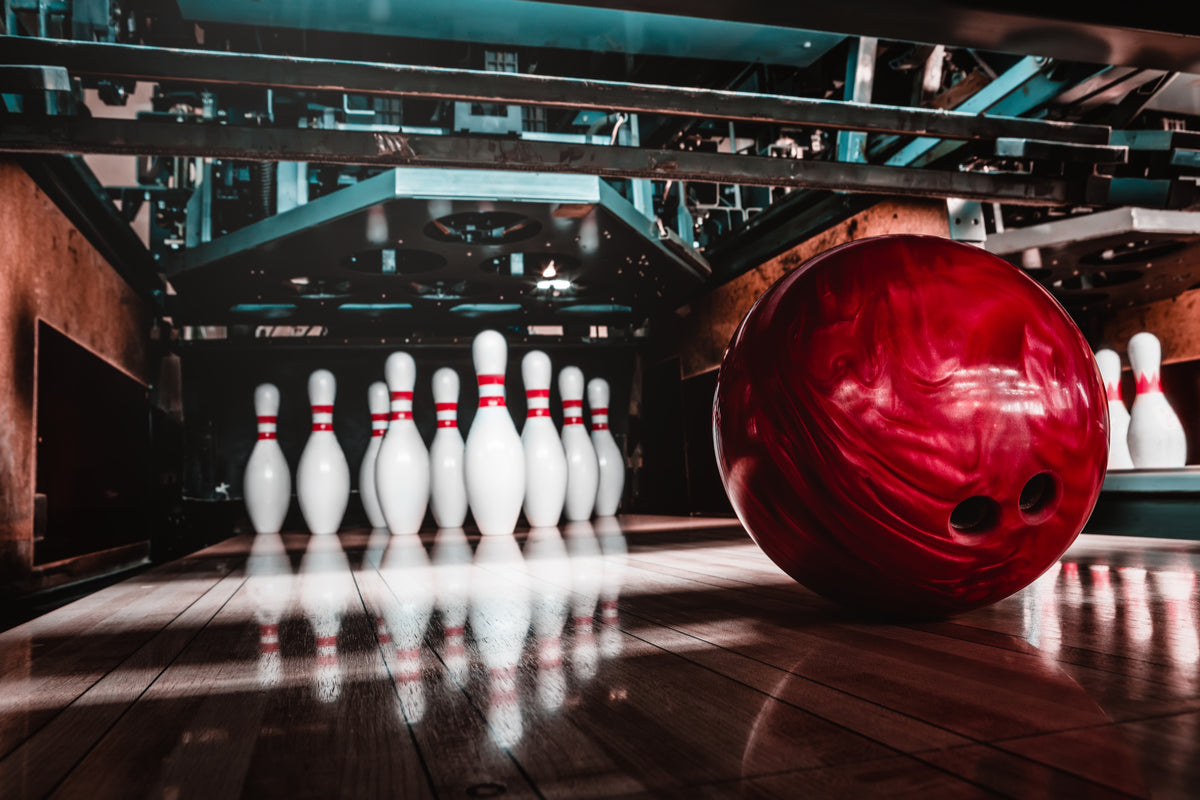Need Help? Have Questions? 1-(888) 969-BOWL (2695)

A Guide to Bowling Ball Materials
Shopping for a new bowling ball can be incredibly daunting. With all sorts of different cores and surface materials, not to mention colors, it can be challenging to decide what sort of bowling ball you should purchase. Whether you’re still a beginner trying to practice in order to become a better bowler, or you’re a well-seasoned professional, the different types of bowling ball materials can be tricky to navigate.
Although the earliest bowling balls were made of rubber, today bowling balls are produced using all types of materials. Each kind of bowling ball material offers a certain set of advantages and disadvantages, meaning that no single bowling ball material is definitively the best. It all boils down to personal preference and the circumstance of your game. Many bowlers choose to have a variety of bowling balls in their arsenal in order to adapt to different conditions on the bowling alley. If you’re looking to purchase some new bowling balls, here’s everything you need to know about the three most popular materials.
Plastic
Plastic bowling balls are some of the earliest bowling balls produced, made shortly after the introduction of rubber bowling balls. Plastic balls were designed to be optimized for old-school bowling lanes back in the day. In those days, lanes were primarily made out of wood and the oil pattern on the lanes was simpler, so there was less requirement for grip and traction on the ball surface itself.
Don’t think that makes the plastic bowling ball obsolete in modern play, however. If you’re looking to fill frames, plastic balls are the best option for throwing at spares. The lack of traction and grip on the ball is able to produce fewer angles on the way to the pins compared to other more modern options. Plastic balls also don’t produce a down-lane hook like reactive balls do, making them ideal for this particular application.
Urethane
While plastic bowling balls were a significant improvement over their rubber counterparts, bowling is a sport that changes often, and balls had to keep up in order to stay competitive. After the advent of the plastic bowling ball, bowling ball manufacturers began creating balls out of urethane, a type of synthetic resin. These urethane balls had some of the benefits of both rubber and plastic, allowing balls to be made out of a sort of hybrid material. Urethane balls reached the peak of their popularity in the 1990s, and they have experienced a resurgence in recent years.
The return of the urethane bowling ball is largely due to the material’s advantage when being played on short oil patterns or dry lane conditions, which can occur if a lane has been overused without being re-oiled in between. Keeping a urethane ball handy during bowling night can give you a definitive edge over your competition once your compatriots have ruined the oil pattern on the lane after a night of fun.
Reactive
Finally, reactive balls are the most recent bowling ball innovation. Made from a grippy resin, reactive balls are the most popular bowling balls for modern play today. While not quite as durable as plastic or urethane balls, reactive balls are able to provide players with significantly greater friction, hook potential and pin action when thrown. Reactive balls allow good bowlers to control the ball much better than other types of bowling balls, but likewise, inexperienced bowlers may find themselves punished more severely for errors when throwing the ball due to its heightened sensitivity.
At the end of the day, all bowling balls offer different advantages for different situations, so the important thing is to buy one that suits your playstyle and experience today!
Leave a comment